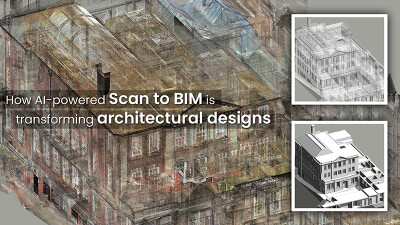The Digital Twin Consortium is an organization that brings together industry, government and academia to address the consistency and interoperability of digital twins. This week, the Digital Twin Consortium published a white paper on reality capture, entitled, Reality Capture: A Digital Twin Foundation.
The paper introduces the fundamentals of reality capture, which in many cases, plays a key role in the lifecycle of a digital twin. It provides organizations with an understanding of reality capture devices, their applications, and knowledge of essential industries where reality capture has specific considerations.
Reality-capture technology embodies a set of devices and processes that collect the conditions of a physical object or space. When implemented and managed correctly, these tools accurately and efficiently create digital duplicates of physical things, such as small objects, rooms, buildings, or planetary landscapes. Reality capture provides insight and awareness through the transparent representation of real-world conditions.
“Reality capture technologies play an important role in providing context and, depending on the scenario, delivering real, on-time decision support for situational awareness. This in turn enriches digital twin predictive accuracy and outcomes,” said Dan Isaacs, CTO of Digital Twin Consortium.
“Situational awareness serves to augment event intelligence for timely, high confidence, data-driven, and evidence-based decision making.”
“Reality capture technology has rapidly evolved in the past two decades and continues to be in a state of accelerated change. We work with building owners looking to transform their projects but constantly losing track of this evolving field,” said John Niles, Technology Consultant with Gafcon Digital.
“This white paper demystifies the principles that make reality capture successful, guiding users on which tools and techniques to deploy and when and how to integrate reality capture into their strategy.”
Reality capture is different across different industries as each industry has its own use cases that drive the various hardware and software selections and drive different capture frequencies and accuracy requirements. For instance, a surveyor building a bridge may require a scanner with a range of thousands of feet, whereas an electrical designer surveying an electrical room may only need a scanner with a range of a few feet.
“For digital twins to play a growing role in the industry for simulations, remote control or metaverse experiences, they must accurately reflect built reality,” said Dominique Pouliquen, CEO of Cintoo.
“Various technologies are available to capture these conditions, ranging from passive cameras to active laser scanners, but navigating the reality-capture landscape is not easy. There isn’t a single scanning device that meets the criteria for all possible use cases and work flows. Today’s white paper provides information organizations can use to make the right investment decisions.”
“The fundamental struggle with catching any wave is understanding when, where, and how to apply one’s effort. By understanding these parameters, we can convert manageable levels of input and planning into true forces of transformation,” said Scott McClure, Innovation Project and Program Manager, North Wind Group.
“In this white paper, we combined our insights and resources to build a guide to help key managers and their organizations innovate with reality capture for real change.”
Download Reality Capture: A Digital Twin Foundation from the Digital Twin Consortium website for more information and for a complete list of authors.






